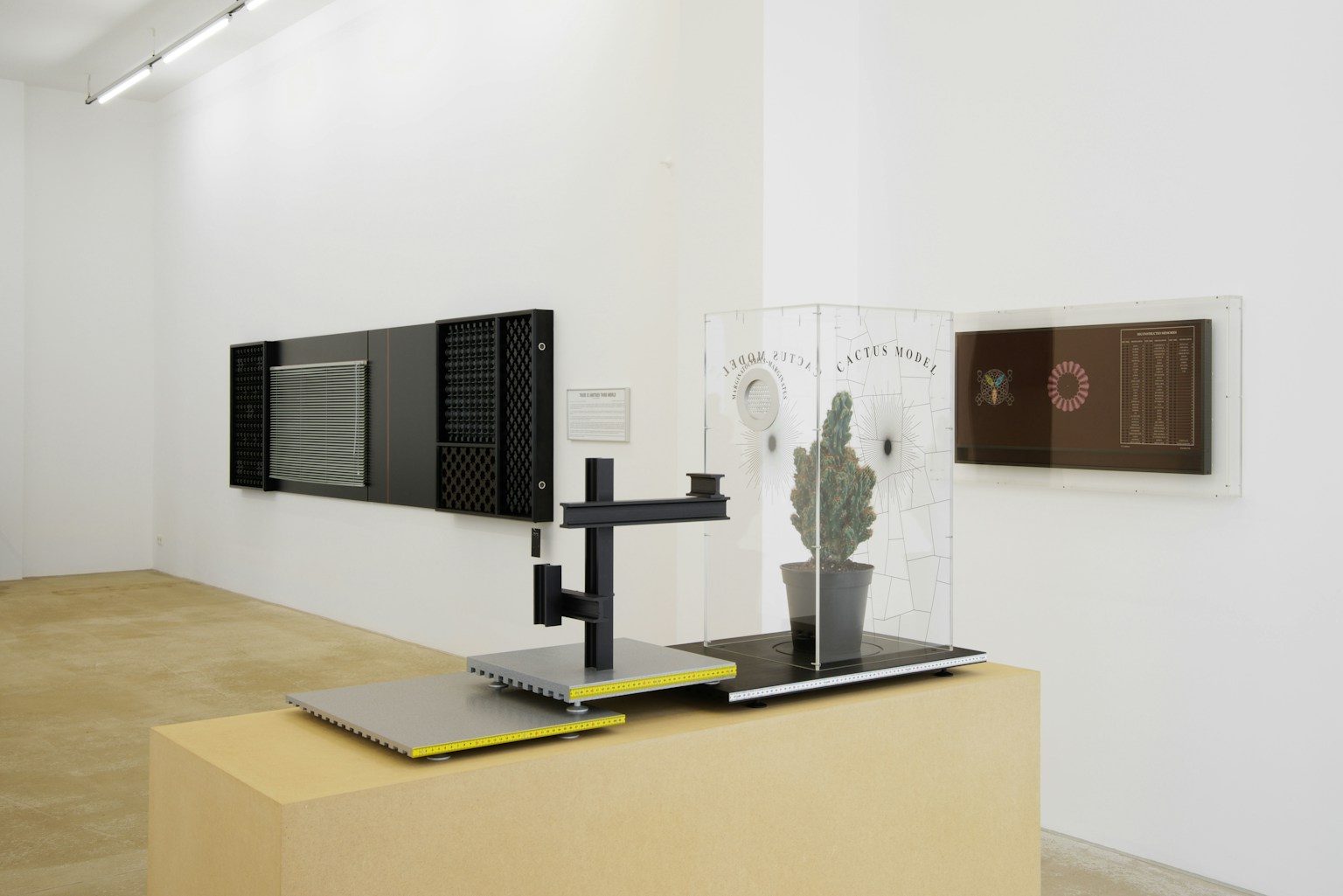On 24 June 2016 Zvi Goldstein (1947, Transylvania; lives and works in Jerusalem) will open his largest exhibition to date at S.M.A.K. Entitled Distance and Differences, the exhibition will cover four decades of intensive artistic production. It will occupy most of the upper floor of the museum with twenty-one large-scale works – clusters of free-standing, system-like sculptures, wall installations and architectural settings.
During the 1970s, Goldstein worked as a conceptual artist in Western Europe, mainly using text, photography, audio recordings and film to explore questions of perception, as well as social, political, economic and theoretical subjects. However, during that period he became increasingly dissatisfied with the art of late Modernism and with contemporary Post-Modernist developments. At the same time, he began sharpening his awareness of post-colonial challenges against the background of his personal history of migration. In 1978, Goldstein decided to move to the Middle East and make Jerusalem his geographical and conceptual habitat. He assumed that this place was between the centre and the periphery, outside yet also in contact with the dominant Western culture.
Simultaneously with this change of location, Goldstein switched media, concentrating on object-related sculptures and pamphlets, taking Russian Constructivism as a precedent, since it was the first non-Western movement to influence modern art. During the 1980s and 1990s, the artist created a body of work that anchored contemporary art practice in non-Western contexts and pre-modern traditions. He developed his approach from a variety of perspectives, such as climatology, botany, ethnography, eschatology and anomaly. In addition, Goldstein expanded his practice by traveling to hermetic communities and societies still only peripherally touched by modernity (mainly in Africa and Asia). At the core of his method are non-linear, non-hieratical and hybrid creations, divided into six predefined groups of works.
The exhibition at S.M.A.K. will reflect on Goldstein’s method as a unique artistic model, the framework of which incorporates the Middle East in general, and Jerusalem in particular, as a source of new aesthetics in the global but still predominantly Western art field. Goldstein’s artistic model strives to lessen the presence of the artist’s hand in his works. The works are immaculate and spotless, involving technologically-generated production. They deny the connection between the peripheral and the exotic, the manual, the immediate, the gestural etc., turning aesthetics into a political tool for changing common views on peripheral cultural artefacts. Goldstein’s model inverts the image that makes a distinction between places that are the product of the industrial revolution and places where products are handmade, in an attempt to promote a cognitive transformation of the Western view of Middle-Eastern culture.
And while offering an alternative vision on art in peripheral areas, Goldstein’s exhibition at S.M.A.K will highlight the hybrid nature of the world, its decentralized structure and its non-consecutive logic. In Goldstein’s world, Modernist categories such as reverie and theory, information and aesthetics, context and presence, are no longer opposites. Goldstein’s model of the contemporary does not only embrace the ‘here and now’. Instead it constantly produces shifts and leaps between different times and places and continually implements distances and differences, which turn the ‘here’ into ‘there’, and the ‘now’ into a mystery. As a result, the overall impact of Goldstein’s exhibition at S.M.A.K. will suggest an image of an alien culture – remote but up-to-date, evocative yet unclassifiable.
Curator: Ory Dessau
Support provided by the Artis Grant Program

